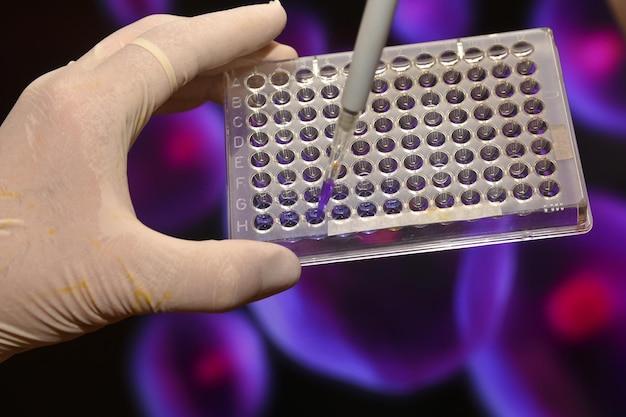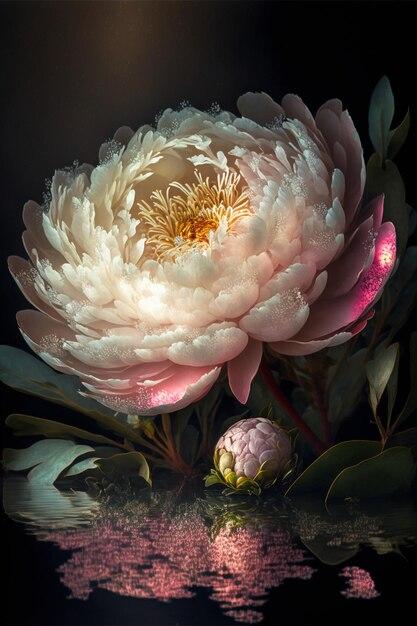Welcome to our blog post on the intriguing topic of whether blood is a colloid or a suspension. If you’ve ever wondered about the nature of blood and its classification, you’re in the right place. We’ll delve into this question and provide you with a comprehensive understanding of the properties of blood.
Throughout this article, we’ll explore the characteristics of colloids and suspensions, and discuss whether blood fits into these categories. We’ll also address related queries such as the types of colloids found in blood and whether blood can be considered a true solution. So, let’s dive in and unravel the enigma surrounding blood’s categorization!
Stay tuned for an enlightening exploration of the properties of blood and its classification as either a colloid or a suspension.
Is Blood A Colloid Or Suspension
When it comes to the question of whether blood is a colloid or suspension, we’re diving into the fascinating realm of science and biology. So, let’s roll up our sleeves and get ready for a blood-pumping adventure!
What Is a Colloid
To understand whether blood is a colloid or suspension, we need to grasp the concept of colloids. Picture this: you’re at a fancy dinner party, and the host serves a scrumptious fruit salad. Now, this salad consists of delicious fruits suspended in a gel-like substance. That, my friend, is the essence of a colloid.
Blood: More Than Just Red Goodness
Now, let’s shift our focus to our mighty bloodstream. Ah, blood — the elixir of life, the crimson conduit of vitality. But is it a colloid or a suspension? Well, the verdict may surprise you: blood is actually both.
Blood: A Suspended Solution
First, let’s explore the suspension side of things. In essence, a suspension is a heterogenous mixture where solid particles are dispersed in a liquid and eventually settle down due to gravity. Imagine a glass of orange juice with all those juicy pulp bits dancing around. Similarly, blood contains various suspended particles like red blood cells, white blood cells, and platelets suspended in plasma.
Colloid-ial Blood
But wait, there’s more! Blood goes beyond being a mere suspension; it also exhibits colloidal behavior. A colloid is a mixture where tiny particles are dispersed evenly throughout a medium, creating a stable and uniform distribution. In the case of blood, the protein molecules found in plasma serve as colloids, keeping the blood stable and well-mixed.
Blood: A Dynamic Duo
So, to answer the question of whether blood is a colloid or suspension, we can confidently say it’s both. Blood contains suspended particles (red blood cells, white blood cells, and platelets) in plasma, which acts as a colloid. It’s like having the best of both worlds, a dynamic blend of characteristics that make blood the life-giving force we all depend on.
In the vast expanse of scientific wonders, blood stands as a remarkable example of a substance that defies easy categorization. It is, simultaneously, a suspension and a colloid, showcasing the complexity and beauty of the human body’s intricate systems. Next time you look at a drop of blood, marvel at its multifaceted nature and remember that it’s not just red goodness, but a mesmerizing blend of suspensions and colloids working harmoniously to sustain life.
FAQ: Is Blood a Colloid or Suspension
In the world of science, we often come across terms like colloid and suspension. These terms can be a bit perplexing, especially when it comes to something as vital as blood. So, let’s dive into this captivating subject and address some frequently asked questions (FAQs) about whether blood is a colloid or a suspension.
Is Smoke a Colloid Solution
No, smoke is not a colloid solution. Smoke is actually a mixture of tiny solid particles and gases suspended in the air. It doesn’t have the dispersed phase and continuous phase characteristic of a colloid solution.
Is Coffee a Mixture
Yes, coffee is indeed a mixture, and a delicious one at that! It is composed of water and different compounds extracted from coffee beans. So, the next time you’re sipping your morning brew, remember that you’re enjoying a delightful mixture.
Is Blood a Mixture
Yes, blood is undeniably a mixture. It consists of various components, including red and white blood cells, plasma, platelets, and dissolved substances like proteins and gases. This complex mixture performs vital functions to keep our bodies functioning smoothly.
Is Soda a Colloid or Solution
Soda, also known as a fizzy drink, is not a colloid or a solution but rather a homogeneous mixture. It is made by dissolving carbon dioxide gas in water, along with other ingredients like sugar, flavorings, and preservatives.
Is Human Blood a Mixture
Absolutely! Human blood is indeed a mixture. It contains countless red and white blood cells, platelets, plasma, and various substances that are essential for maintaining our overall health. It’s a fascinating cocktail flowing through our veins.
Which Type of Colloid is Blood
Blood falls under the category of a colloidal suspension. It is a mixture where solid particles (blood cells) are dispersed in a liquid medium (plasma). The colloidal properties of blood play a crucial role in transporting oxygen, fighting infections, and maintaining bodily functions.
Is Blood a True Solution
No, blood is not classified as a true solution. True solutions consist of solutes (particles) that are uniformly dispersed throughout a solvent (liquid). In the case of blood, it contains different types of cells, proteins, and other substances that are not evenly distributed.
Is Smoke a Colloid? Give Reasons.
Indeed, smoke is a classic example of a colloid. It consists of tiny solid particles suspended in a gas medium (air). These particles are so small that they remain suspended rather than settling down due to gravity. So, when it comes to smoke, seeing isn’t believing!
Is Blood a Colloid or Not
Yes, blood can be considered a colloid due to its colloidal suspension nature. It contains dispersed solid particles (blood cells) within a liquid medium (plasma). By showing colloidal behaviors, blood can deliver oxygen, nutrients, and hormones to the various parts of the body.
What Is a Colloid in Simple Terms
In simple terms, a colloid is a type of mixture where tiny particles are dispersed within a medium. It can be solid, liquid, or gas, with the dispersed particles being larger than individual molecules but smaller than what we can see with our naked eye. Think of it as a miniature party in a liquid cocktail!
What Type of Colloid is Milk
Milk is an excellent example of an emulsion, which is a type of colloid. Specifically, milk is an oil-in-water emulsion, where tiny droplets of fat (oil) are dispersed within a water-based solution. Who knew that your breakfast cereal was part of a culinary colloid masterpiece?
Why Is Powdered Milk a Colloid
Powdered milk retains its colloidal nature even in powdered form. This is because the manufacturing process involves dehydrating milk without affecting its colloidal structure. So, when you add water to powdered milk, it rehydrates and regains its colloidal properties.
Is Smoke a Colloid or Suspension
Smoke is classified as a colloid due to its heterogeneous nature. It consists of tiny solid particles suspended in air, forming a colloidal suspension. So, the next time you see smoke rising from a campfire, remember that it’s a colloid in action.
Which Is an Example of a Colloid
One classic example of a colloid is fog. It forms when tiny water droplets disperse within the air, creating a visible mist. Fog is nature’s way of reminding us that even the most ordinary things can have extraordinary characteristics.
Is Toothpaste a Colloid
Yes, toothpaste is another excellent example of a colloid. It contains solid particles (such as abrasives) dispersed within a gel-like medium. So, the next time you squeeze out that refreshing speckled toothpaste, you can appreciate its colloidal composition.
Is Smoke an Example of a Colloid
Certainly! Smoke serves as a prime example of a colloid. It consists of fine solid particles suspended in a gas medium, making it a classic colloidal system. Remember, where there’s smoke, there’s a colloid party in the air!
Why Is Milk Not a Suspension
Milk is not considered a suspension because its particles do not settle over time due to gravity. In a suspension, the dispersed particles are generally larger and more visible, leading them to settle at the bottom of the mixture. So, rest assured, your milk isn’t going anywhere, except perhaps into your morning coffee.
Is Milk a Colloid or Suspension
Milk is a colloid, specifically an emulsion type of colloid. It contains tiny droplets of fat dispersed in a water-based solution. This unique colloidal composition is what gives milk its creamy, dreamy texture.
Is Salt Water a Solution, Colloid, or Suspension
Salt water is a solution, not a colloid or suspension. When salt dissolves in water, it forms ions that become uniformly dispersed throughout the liquid. So, the next time you take a dip in the ocean, remember you’re swimming in a vast expanse of salty solution.
Is Honey a Colloid
Yes, honey is a delicious example of a colloid. It consists of sugar molecules dissolved in water, along with suspended particles such as pollen, wax, and other micro-sized solids. So, the next time you drizzle honey on your toast, savor the sweet essence of a natural colloid.
Is Mayonnaise a Colloid or Suspension
Mayonnaise is not a suspension but actually an example of an emulsion, which is a type of colloid. It is made by dispersing tiny droplets of oil in a water-based medium, along with other ingredients like vinegar, egg yolk, and mustard. It’s a culinary colloid delight!
Why Is Blood Considered a Suspension
Blood is considered a suspension because it contains solid particles (such as red and white blood cells) that are dispersed within a liquid medium (plasma). These particles, although small, can settle over time if not kept in motion, making blood an intriguing example of a suspension.
What Is a Colloid? Give Two Examples.
A colloid is a type of mixture where small particles are dispersed within a medium. Two common examples of colloids are milk and gelatin desserts. Milk consists of tiny fat droplets dispersed in water, while gelatin desserts are made of solid particles suspended in a gel-like medium. Delicious and colloidal!
Is Blood a Mixture or a Solution
Blood is a complex mixture, not a solution. It contains various components such as cells, proteins, and other substances that are not uniformly dissolved in a solvent. So, blood can be seen as a captivating mixture, keeping us alive and kicking.
Understanding whether blood is a colloid or suspension can shed light on its fascinating properties. Blood’s colloidal nature, with its dispersed particles within a liquid medium, plays a crucial role in our health and well-being. So, next time you hear the rhythmic beat of your heart, remember the vibrant colloidal dance happening within you. Keep exploring the captivating world of colloids and suspensions; it’s bound to leave you in awe!

